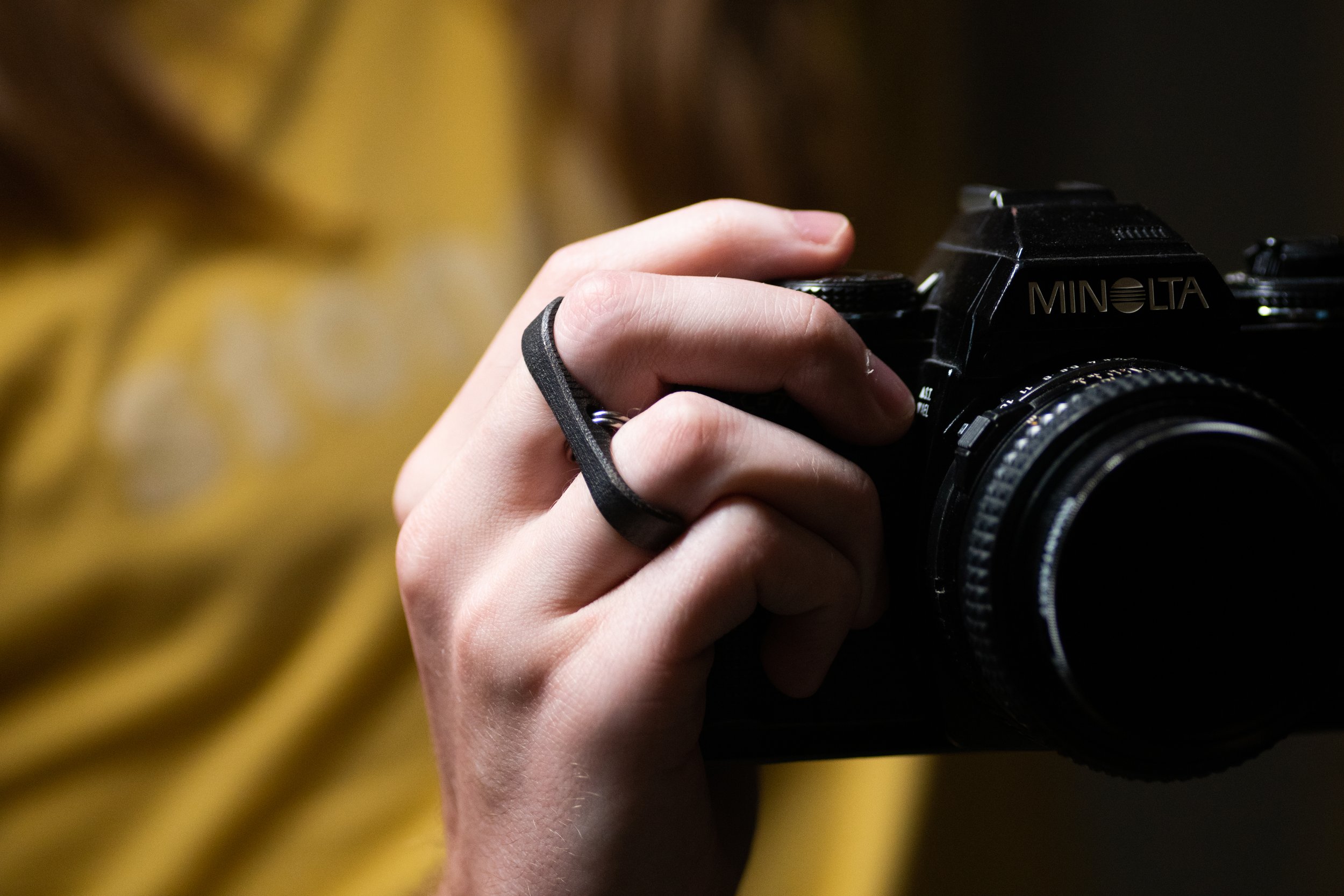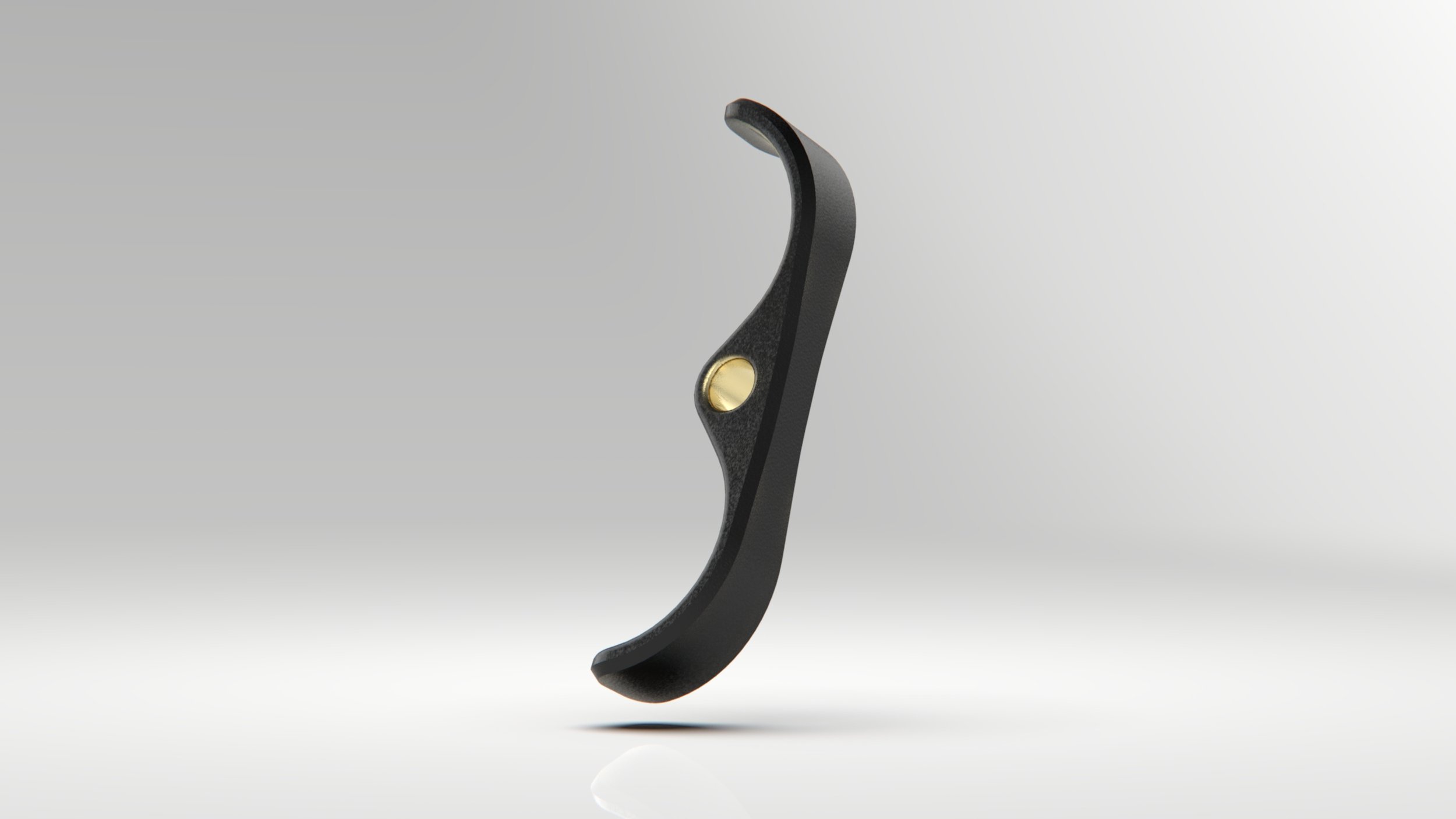STEADY
The age-old camera strap is a tried and true device, but not without flaws. How might we design a compact way to keep a camera safe?
The most common way to carry a camera safely and securely has always been some form of strap. Both neck straps and wrist straps are used to attach a camera to the body without worry of it falling and getting damaged. While these straps are the most commonly used ways of carrying a camera, they have their own issues. Neck straps can swing a camera around in the air when making sudden movements, and wrist straps are not secure. My goal was to solve both of these problems - dangerous swinging and lack of security - While also creating a compact, lightweight, and universal tool.
CONCEPT SKETCH
The concept I landed on was a retaining bracket, similar to an anchor, that would keep the camera firmly attached to the user’s hand while also allowing it to be easily slipped on and off, all without the need of constant hand grip exertion to keep the camera attached.
For the attachment point, I decided to use the same location that neck straps use - the side rings that almost every camera has. This would mean that whatever I would design would fit almost every camera, past and present, due to this standard already being in place. Having the attaching loop in the middle of the device would keep it balanced and stable, as the fingers would equalize the forces like a fulcrum.

3D model based on concept sketch

Initial Prototype - 3D printed for user feedback

Refined 3D model based on user feedback

Refined prototype - 3D printed
Steady is made from metal, painted black. I chose metal for its weight and durability, as I found that Steady also functions as a finger guard. Many cameras are made of metal with a coat of black paint, and I mimicked those qualities to make it look and feel like the rest of the camera.


Steady uses the triangular key rings that are used to attach camera straps to. Because of this, Steady is almost universally compatible with almost every camera due to it’s utilization of pre-existing hardware






